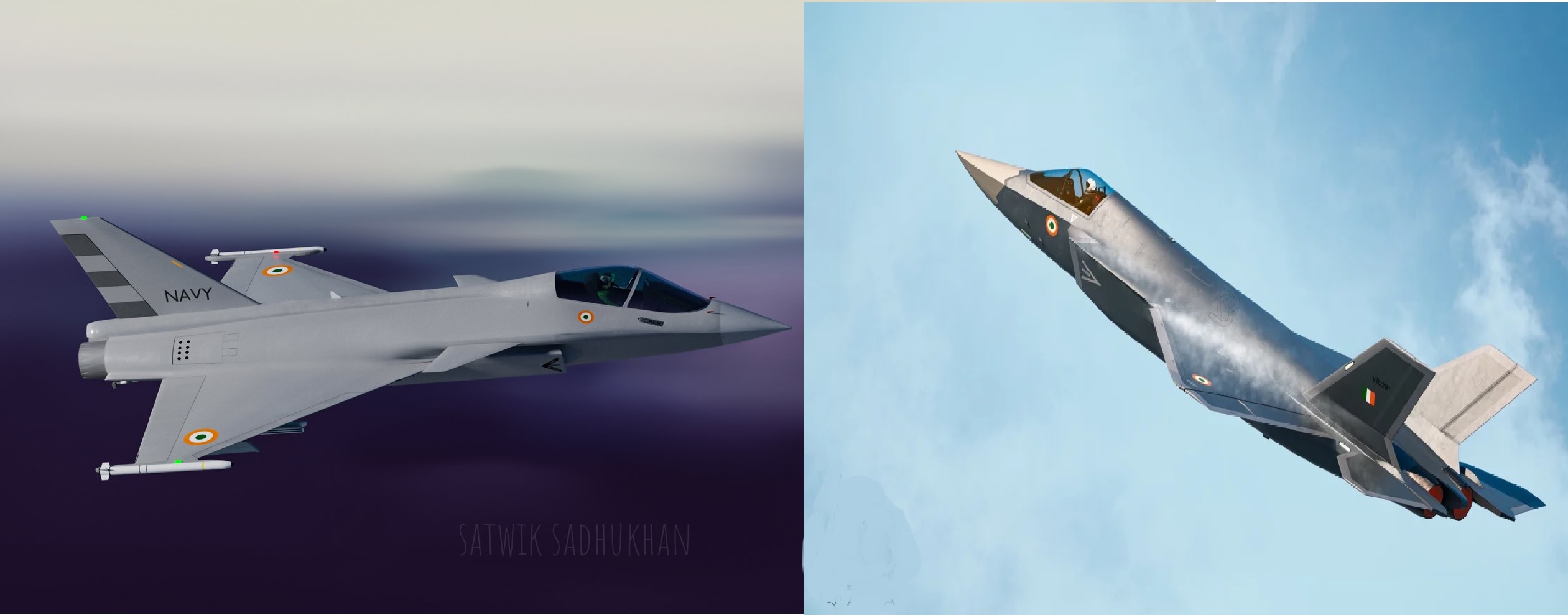India’s MoD Considers Merging IAF with Navy’s TEDBF Program for Cost Efficiency and Shared Development

In a significant move aimed at consolidating India’s defence capabilities and optimizing budget allocation, the Ministry of Defence (MoD) is reportedly planning to merge the Indian Air Force (IAF) with the Navy’s Twin Engine Deck Based Fighter (TEDBF) program. This initiative not only aligns with India’s push for self-reliance in defence manufacturing but also addresses financial challenges associated with producing advanced fighter jets.
The TEDBF program, spearheaded by Hindustan Aeronautics Limited (HAL) and the Aeronautical Development Agency (ADA), has been designed to replace the aging fleet of MiG-29K fighters currently operating from the Indian Navy’s aircraft carriers. The Indian Navy has projected a requirement of 145 TEDBF units, but the initial approval by the MoD is for 80 units, which raises concerns about production scale and per-unit costs. To make the program financially viable and attractive for private-sector participation, a minimum production of 200 jets is being proposed.
The TEDBF: A Technological Marvel
The TEDBF is a 4.5-generation fighter aircraft with several cutting-edge features. Designed for carrier operations, it boasts folding wings to optimize space on aircraft carriers. The twin-engine configuration enhances redundancy, safety, and operational range. With a maximum take-off weight (MTOW) of approximately 26 tonnes and a payload capacity of 9 tonnes, the TEDBF is a formidable multi-role aircraft capable of air superiority, strike missions, and maritime reconnaissance.
Key specifications of the TEDBF include:
- Engines: Initially powered by the American GE F-414 engines, which deliver a thrust of 98kN per engine. Future versions will incorporate a 110kN-class engine being developed domestically by the Gas Turbine Research Establishment (GTRE).
- Avionics: State-of-the-art avionics suite with AESA radar, advanced electronic warfare systems, and data fusion capabilities. The avionics are expected to share significant overlap with those of the Advanced Medium Combat Aircraft (AMCA), ensuring cost efficiency and seamless technological integration.
- Weapons Loadout: Equipped with a variety of precision-guided munitions, air-to-air missiles, and anti-ship missiles. The TEDBF will also support indigenous weapons like the Astra BVRAAM (Beyond Visual Range Air-to-Air Missile) and BrahMos-NG cruise missile.
- Range and Speed: An operational range of approximately 1,000 km with a top speed of Mach 1.6, making it suitable for extended missions.
Shared Development with AMCA
The TEDBF and the IAF’s Advanced Medium Combat Aircraft (AMCA) programs are set to share several critical technologies and components. Common Line Replaceable Units (LRUs) and avionics systems will not only reduce development costs but also simplify logistics and maintenance. Both programs will eventually utilize the 110kN-class engine under development, ensuring continuity in propulsion systems and reducing dependency on foreign suppliers.
Strategic Implications of the Merger
By merging the IAF into the TEDBF program, the MoD aims to pool resources, avoid duplication of efforts, and achieve economies of scale. A larger production order will lower per-unit costs, making the program more viable for private-sector involvement. This move aligns with India’s push to promote Indigenous defence manufacturing under the “Atmanirbhar Bharat” initiative.
Moreover, this strategy allows both the Navy and the Air Force to benefit from a unified development ecosystem. For the IAF, a version of the TEDBF tailored for ground-based operations could supplement its fleet, particularly in light of delays and cost escalations in the AMCA program. This collaboration will also enhance interoperability between the two services, a critical requirement in modern warfare.
Challenges and Opportunities
While the merger presents numerous benefits, challenges remain. The MoD must ensure that the integration of the two services into the TEDBF program does not lead to compromises in operational requirements or delays in timelines. Additionally, the development of the indigenous 110kN engine will be a key factor in ensuring long-term self-reliance and cost savings.
On the brighter side, a successful implementation of this program could set a benchmark for future joint development initiatives in India’s defence sector. It will also strengthen India’s defence exports, as the TEDBF could attract interest from other nations seeking advanced yet cost-effective fighter aircraft.
Conclusion
The integration of the IAF with the Navy’s TEDBF program marks a transformative step in India’s defence strategy. By streamlining resources and fostering collaboration, the MoD aims to build a robust ecosystem for Indigenous fighter aircraft production. If executed successfully, this initiative could significantly enhance India’s air and naval combat capabilities while promoting self-reliance and technological innovation in the defence sector.



